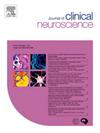Cost-effectiveness of the single-surgeon approach in microvascular decompression for trigeminal neuralgia
IF 1.9
4区 医学
Q3 CLINICAL NEUROLOGY
引用次数: 0
Abstract
Background
Centralizing surgical cases to a dedicated surgeon (single-surgeon approach) has shown improved outcomes in various neurosurgical procedures, including microvascular decompression (MVD) for trigeminal neuralgia (TN). However, the cost-effectiveness of this approach in MVD for TN has not been conclusively demonstrated. This study aims to investigate the cost-effectiveness of the single-surgeon approach in MVD for TN compared to the conventional multi-surgeon approach.
Methods
A prospective cohort study was conducted from 2014 to 2020 (multi-surgeon approach 2014–2017; single-surgeon approach 2018–2020). Data on demographic and clinical characteristics, pain control, complications, hospital length of stay, and costs from the healthcare provider’s perspective (pre-operative, operative, post-operative, follow-up intervention, and complication-related) were documented. Pain-and-complication-specific quality-adjusted life years (PCQALY) were calculated using Kaplan-Meier favorable-pain-control and complication-free probability curves, followed by a cost-effectiveness analysis.
Results
Seventy-two patients were included (46 in the single-surgeon group, 26 in the multi-surgeon group). The single-surgeon approach yielded a higher 3-year PCQALY gain (2.8 vs. 1.6) and significantly shorter hospital stays (5.7 ± 3.5 days vs. 8.9 ± 3.9 days) despite higher total costs (USD 12,462 ± 5,577 vs. USD 9,128 ± 4,012) (p < 0.05). The single-surgeon approach had a cost-effectiveness ratio of USD 4,491/PCQALY (vs. USD 5,635/PCQALY for the multi-surgeon approach), with an Incremental Cost-Effectiveness Ratio (ICER) of USD 2,887/PCQALY gained (0.65 times GDP/capita), indicating its cost-effectiveness according to World Health Organization criteria.
Conclusion
The single-surgeon approach is cost-effective despite its higher associated costs, due to its superior pain control and complication profile.
三叉神经痛微血管减压术中单一外科医生方法的成本效益
背景将手术病例集中给专门的外科医生(单个外科医生方法)已证明可改善各种神经外科手术的疗效,包括治疗三叉神经痛(TN)的微血管减压术(MVD)。然而,这种方法在治疗三叉神经痛的微血管减压术中的成本效益尚未得到证实。本研究旨在探讨单刀法与传统的多刀法相比,在三叉神经痛的 MVD 治疗中的成本效益。记录了人口统计学和临床特征、疼痛控制、并发症、住院时间以及医疗服务提供者角度的成本(术前、手术、术后、后续干预和并发症相关)等数据。采用 Kaplan-Meier 有利疼痛控制和无并发症概率曲线计算疼痛和并发症特异性质量调整生命年(PCQALY),然后进行成本效益分析。尽管总费用较高(12,462 美元±5,577 对 9,128 美元±4,012),但单一外科医生方法的 3 年 PCQALY 收益更高(2.8 对 1.6),住院时间明显更短(5.7±3.5 天对 8.9±3.9 天)(p < 0.05)。单刀法的成本效益比为 4,491 美元/PCQALY(而多刀法为 5,635 美元/PCQALY),增量成本效益比 (ICER) 为 2,887 美元/PCQALY(0.65 倍 GDP/人均),这表明根据世界卫生组织的标准,单刀法具有成本效益。
本文章由计算机程序翻译,如有差异,请以英文原文为准。
求助全文
约1分钟内获得全文
求助全文
来源期刊

Journal of Clinical Neuroscience
医学-临床神经学
CiteScore
4.50
自引率
0.00%
发文量
402
审稿时长
40 days
期刊介绍:
This International journal, Journal of Clinical Neuroscience, publishes articles on clinical neurosurgery and neurology and the related neurosciences such as neuro-pathology, neuro-radiology, neuro-ophthalmology and neuro-physiology.
The journal has a broad International perspective, and emphasises the advances occurring in Asia, the Pacific Rim region, Europe and North America. The Journal acts as a focus for publication of major clinical and laboratory research, as well as publishing solicited manuscripts on specific subjects from experts, case reports and other information of interest to clinicians working in the clinical neurosciences.
 求助内容:
求助内容: 应助结果提醒方式:
应助结果提醒方式:


